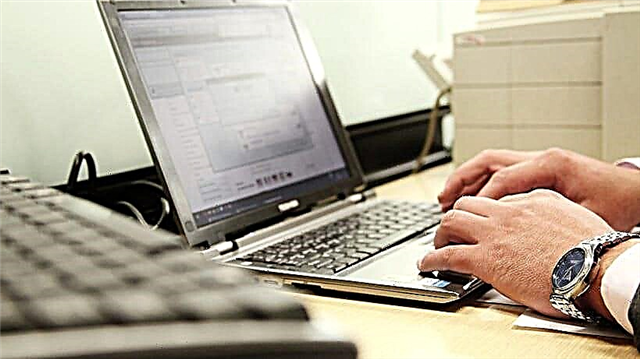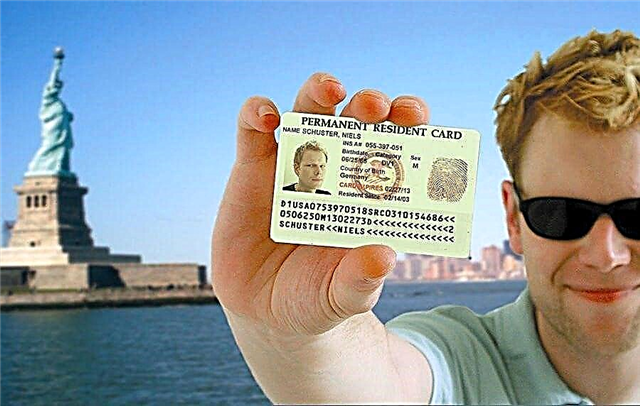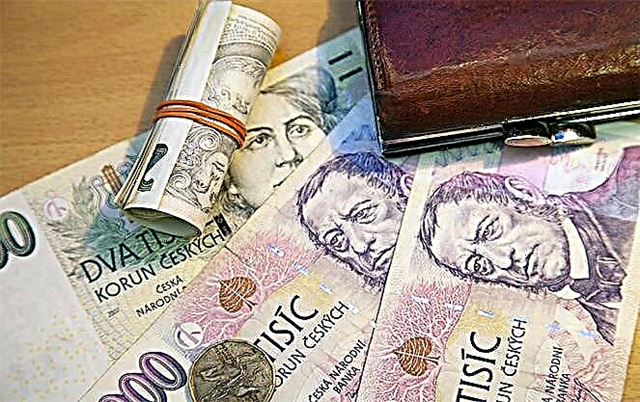The Czech currency is the Czech crown. It is the crowns that tourists traveling around the country will need. Although if you take dollars or euros with you, they will also come in handy. Nevertheless, it is better to deal with financial issues in advance. And for this it is worth finding out what money is worth taking with you, what amount will be sufficient for comfortable living in the territory of the Czech Republic and whether it is possible to use bank cards there.

A little about the history of the Czech currency
The Czech crown has been and remains the main currency of the Czech Republic since 1993. After the split of Czechoslovakia, the Czechs had to urgently introduce their own currency, which they did. And in just a month. The first bills with a denomination of 200 kroons appeared in the same 1993.
However, the history of this monetary unit began almost a thousand years ago. The first crown was minted back in 1340 on the territory of modern France. For many hundreds of years, the krone was a means of making payments in many European countries, but at present this money is quoted only in a couple of countries.
In the Czech Republic, the crown was first used in 1882, when the country was part of the Austro-Hungarian Empire. At that time, the crown consisted of a hundred kopecks - hellers.
In 1919, this currency was taken over by Czechoslovakia, and later, after the collapse of the country, by the Czech Republic. The National Bank of the Czech Republic did not change the usual settlement system, but nevertheless it had to abandon the use of small coins - hellers. Today they cannot be exchanged even in banks.
Therefore, tourists should be careful - sellers of souvenirs and other small goods often try to foist coins on people that are no longer worth anything, under the guise of change.
What coins and banknotes are used for settlements in the Czech Republic
The Czech Republic has its own monetary structure. As in many countries, banknotes are issued in the form of coins and banknotes. The Czech currency code according to ISO 4217 is CZK (Czech crown).
However, by 2021 (if nothing changes) the Czech Republic should switch from the Czech koruna to the euro, and locals should get used to it.
As for bargaining chips - hellers, they have long been withdrawn from the country's monetary circulation. Now you can pay for purchases only in kroons. Nevertheless, the coins that have come out of circulation are of great value - numismatists arrange a real hunt for hellers, offering big money for them.
What coins are in circulation in the Czech Republic?
First of all, we note that the coins in denominations of 10 and 20 hellers were withdrawn from circulation back in 2003, and five years later, in 2008, a coin with a denomination of 50 hellers joined them.

Today the minimum currency in the country is 1 Kč. In addition, the following coins are used:
- 2 Kč - the distinctive features of this coin are the image of the Great Moravian decoration with bird motifs, as well as the 11-sided, slightly rounded shape;
- 5 Kč - the coin weighs 4.8 g and depicts the Charles Bridge;

- 10 Kč - the city of Brno and parts of the clock are depicted on the coin;
- 20 Kč - the coin has thirteen faces and a rounded shape. It is decorated with carvings in the form of a part of an astronomical device, in addition, it depicts a monument to St. Wenceslas. It is quite heavy - its weight is 8.43 g. Earlier, there was also a banknote of exactly the same denomination, but together with the coins mentioned above, it was withdrawn from circulation in 2008;
- 50 Kč is the highest denomination coin in the Czech Republic. It depicts the capital of the country, Prague. A banknote of the same denomination with Anežka Česká depicted on it was withdrawn from circulation in 2021.

Paper money - banknotes - are the real pride of Czechs. It is because of their appearance that most of the country's citizens do not want to give up crowns.
The fact is that Czech banknotes are more like paintings. Their design was developed by the artist Oldřich Kulganek. Being also a forensic expert in the field of numismatics, he managed to combine excellent appearance and maximum security of money against counterfeiting, which was recognized even at the international level - in 2008 the Czech 1000 kroon banknote was even recognized as the best in the world.
- 100 kroons - considered the lowest denomination banknote in the country. At the same time, it is quite small in size - only 140 mm x 69 mm. The front side depicts the Emperor Charles IV, and the back side shows an ornament with a complex pattern.
- 200 kroons - the size of this bill is slightly larger: 146 mm x 69 mm. On its front side there is an image of the great teacher Jan Amos Komensky, and on the back side - the stretching hands of a child and an adult.
- 500 kroons - on the front side of the banknote measuring 152 mm x 69 mm, the Czech writer Bozena Nemtsova is depicted, and on the back side there is a girl in flowers.
- 1000 CZK - This bill measures 158 mm x 74 mm. The front side depicts the historian Frantisek Palacky, and the reverse side - the coat of arms of the Czech Republic and the cathedral.
- 2000 kroons - dimensions of this banknote are 164 mm x 74 mm. On the front, it is decorated with a portrait of Emma Destinova, a famous opera singer, and on the reverse side there is depicted the muse of lyric music and poetry of Eutherp, as well as a violin and cello.
- 5000 kroons is the largest bill, both in face value and in size: 170 mm x 74 mm. Its value and significance is underlined by the image of Tomáš Masaryk, the first president of Czechoslovakia.

Paper money in the Czech Republic is very beautiful, it is convenient to use them: the larger the size of the banknote, the more expensive it is. And if we talk about how to pay for the purchase - with a plastic card or in cash, it should be noted that it is much more pleasant to hold the good old crowns in your hands. At least aesthetically.
How to exchange currency and withdraw cash from a card in the Czech Republic
Tourists rarely come to the country with kroons in their pockets, preferring dollars and euros. Therefore, the money must first be exchanged. And then the question arises: where can you exchange rubles or euros for crowns?
In principle, the exchange is easy to carry out both at the airport and in the city. However, exchange rates there may differ, especially when it comes to the high tourist season. Therefore, you should proceed from the fact that you need to somehow get to the city, and for this you need to have at least a few thousand crowns in order to pay for travel in transport.
You need to change money at banks or specialized exchange offices.
The list of banks that guarantee the official exchange of funds is presented in the article: "How to open an account in a bank in the Czech Republic".
It is categorically not recommended to make a currency exchange with hands - you can simply be deceived.
First, you should contact the exchange offices at the airport in order to have money for travel. If you exchange a small amount, an unfavorable rate will not upset you so much.
On Internet forums, experienced tourists often express their opinions and share their experience of such conversions. According to them, it is easier and more profitable for tourists from Russia to convert rubles (or euros, if any) into crowns in the following ways:
- Arab exchangers. If you are in Prague and have euros in your hands, it is better to exchange money with the Arabs. They have a favorable rate and adequate limits. But do not rush to change all the money at once - it is better to wait for a more attractive rate to make the conversion as profitable as possible. If there is no time to wait, just choose those Arab exchangers that offer the most interesting conditions at the moment.
- Sberbank of Russia (branch in the Czech Republic). For exchange, you can use a Sberbank card, but in order to receive money, you need to find an appropriate ATM, of which there are not so many in the country. According to travelers, money can be withdrawn from CSOB ATMs located right at the airport. For example, there is such an ATM at the Prague airport.That is, in it you can not only exchange euros for kroons without a commission, but also convert rubles in the same way without a commission.
- Do not change, but just pay with a card of the same Sberbank. This possibility really exists. Moreover, knowledgeable people argue that in this case it is more profitable to use a MasterCard card. Visa cards were rejected by tourists as too expensive. However, they are also suitable as a fallback. It should be borne in mind that a Sberbank card converts at a very unfavorable rate, plus you also need to pay a Visa commission, because this is an American payment system, and therefore expensive.
- Use of currency cards (for euros and dollars). This is a great option for people who are paid in euros or dollars. Such a card is suitable for those who arrived in the Czech Republic for a short time, using this country as a transit point - they can easily withdraw euros from the card in Prague.
It doesn't make much sense to specifically convert rubles into euros so that they can be exchanged for kroons later, except that at the time of conversion this way is more profitable. Therefore, it is advisable to analyze exchange rates not just before departure, but at least a week in advance, in order to assess when and where the rate is more profitable.
If you do not have the time and desire to understand all these nuances, you can carry out currency exchange in Prague upon arrival, using cash or a bank card. And although, perhaps, you will lose a little on the exchange, but you will receive crowns quickly and without unnecessary hassle.
Questions that travelers often ask
Tourist trips always raise a lot of questions, especially for people who go abroad for the first time. Usually they relate to the financial component of travel, because prices in other countries differ markedly from Russian ones. For example, tourists who go to the Czech Republic are interested in the following nuances:
What currency is better to take to the Czech Republic and how much money to carry (per person)?
It is better for tourists to take some crowns and a few thousand euros with them and spend the latter on the spot, exchanging them for local currency. If a rich entertainment program is planned, then one adult will need 1500-1800 CZK per day. But this does not include living expenses.
For example, a room in a good hotel will cost about the same, if not more. It turns out to be approximately 3500 CZK per person per day.
Is it possible not to change money, but to pay in euros or dollars?
We are used to thinking that if we are talking about Europe, then it is better to go with dollars or take euros with us. This rule does not work in the Czech Republic. However, if you have euros, you can use them to pay in some large stores (but not all).
Usually, payment in euros is carried out if the purchase is expensive - at least 500 euros. Courses in shopping centers are not very profitable (they can be seen on a special board near the checkout). In addition, if after payment you are entitled to change, it will be returned to you already in crowns. The situation is the same with dollars.
In other words, you won't be able to buy a glass of water for euros, but paying for a hotel is easy.
Can I pay with a Sberbank card in the Czech Republic?
Most of our fellow citizens keep their money on the cards of this particular bank. There are ATMs in the Czech Republic that can convert rubles to crowns. In addition, this card can be used to pay in some shops, restaurants and other establishments. However, it should be borne in mind that in this case the terminals will change rubles at an initially unfavorable rate. Therefore, it is better to carry out the exchange yourself and pay in cash or get a card in kroons.
Which payment in the Czech Republic is preferable - cash or non-cash?
If you have a ruble card, then it is definitely more profitable to pay in cash. True, for this, the money must first be exchanged. At ATMs, the conversion is done automatically, but the rate bites.
As for cashless payments, almost all shops in the Czech Republic work with euros, so purchases can be made using a card. However, only if you have a card for the euro, and the amount in the check is large. It is best to pay with a card with an account in kroons, but if you have come to the country for a couple of weeks, there is no point in getting such a card.
Where is it better to buy crowns - in Moscow or Prague?
Currently, the exchange rate of the kroon against the ruble is: 1 kroon = 2.85 rubles. However, conversion in Moscow will be more expensive. It is best to exchange rubles for crowns here, which will be enough for travel and other minor expenses.
Therefore, first find out how much travel in Czech public transport or taxi costs. Once in Prague, you can find some good exchange options. Moreover, in Russia it is better to exchange rubles for euros and carry them. If you are exchanging euros in the Czech Republic, you should change at least 500 and carefully look at the rate at which the transaction is carried out. At the airport, courses are unprofitable, as well as in tourist areas.
Of course, if a tourist travels to such popular places as Karlovy Vary, or to explore historical sights, it is better for him to exchange euros for crowns in Prague. Money changers operate in small towns, and it is unprofitable and dangerous to buy crowns from them.
True, official exchange offices offer no less extortionate interest rates and an openly unfavorable rate there. In Prague, there are much more exchange offices, although the spread in the exchange rate can be quite significant. But Pilsen offers only two or three exchange offices, where the rate is equally overvalued.
Finally
Many tourists planning a trip to the Czech Republic in 2021 are worried about the not entirely clear financial policy of this state. Despite the fact that there is only one national currency in the country - the Czech crown, almost all stores have double prices on the price tags - in crowns and euros.
However, when heading to Prague or Hradec Králové, each traveler decides for himself which currency to go with. Moreover, you can go to the Czech Republic even with rubles - there are quite enough Sberbank exchangers. But there is one "but": the course is changing, and often in a disadvantageous direction. Therefore, follow the terms of exchange and, if possible, have both kroons and euros with you. Moreover, they must be on the card and in cash.











